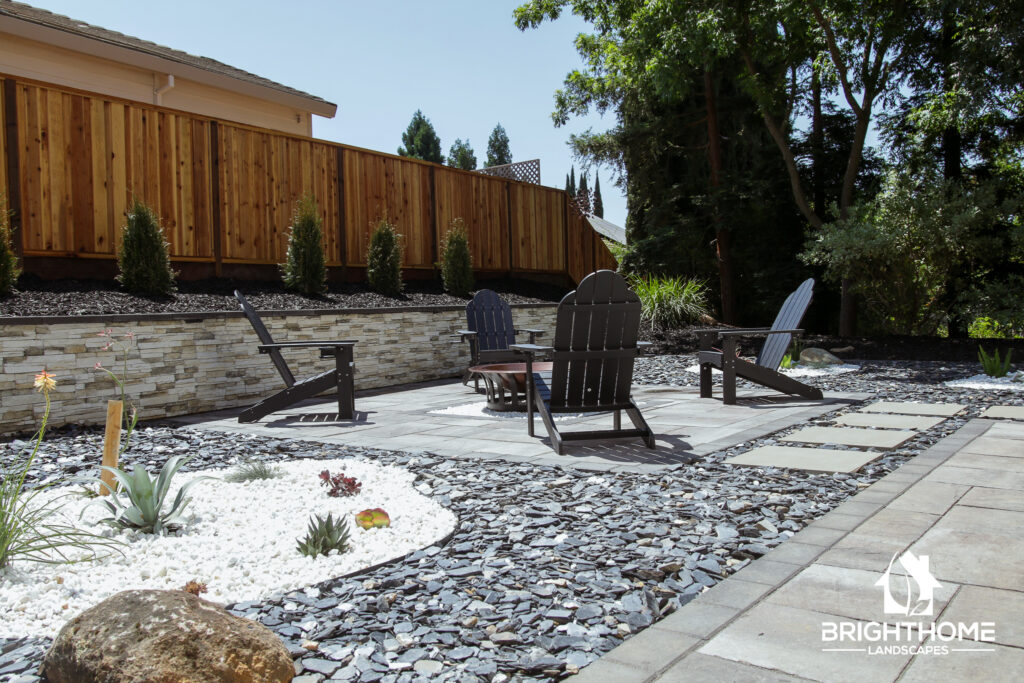April 16, 2024
The Art of Hardscaping: Creating Functional and Stylish Outdoor Living Spaces
Hardscaping—the inclusion of non-living elements in your outdoor spaces—can dramatically transform your yard into a functional and visually appealing extension of your home. From the creation of stylish patios to the practical installation of retaining walls, hardscaping marries aesthetics with utility, offering a durable and attractive framework for your outdoor living areas. This blog explores how various hardscaping elements can enhance both the beauty and usability of your garden or backyard.

Understanding Hardscaping and Its Benefits
Hardscaping refers to the built aspects of landscaping, such as stone paths, wooden decks, concrete patios, and metal fixtures. These features can serve several purposes:
- Structural Functionality: Hardscaping provides essential support for other landscaping elements, controlling erosion and managing water flow with features like retaining walls.
- Aesthetic Appeal: With materials ranging from natural stone to modern pavers, hardscaping elements add textural contrast and color that enrich the visual appeal of your outdoor space.
- Increased Usability: By integrating solid surfaces and structures, hardscaping extends the usable space of your yard, making it perfect for entertainment, relaxation, and play, regardless of weather conditions.
Key Hardscaping Features
1. Patios and Decks
These are the heart of many outdoor spaces, acting as a hub for family gatherings, barbecues, and leisure. Materials can range from classic wood to composite decking, each offering unique styles and benefits.
2. Paths and Walkways
Paths not only guide visitors through different sections of your garden but also protect your plants from foot traffic. They can be crafted from gravel, stepping stones, or decorative bricks, providing both functionality and an aesthetic dimension.
3. Retaining Walls
Essential for sloped landscapes, retaining walls prevent soil erosion and create visual interest in the garden. They can be constructed from timber, stones, or concrete blocks, tailored to complement the surrounding environment.
4. Water Features
Incorporating elements like fountains, ponds, or streams adds a dynamic and soothing aspect to your outdoor areas, creating a tranquil atmosphere and attracting wildlife.
Planning and Implementing Hardscape in Your Garden
Start with a Design Plan
Before beginning any hardscaping project, it’s crucial to have a clear design in mind. Consider how each element will serve your needs and fit into the existing landscape. Use design software or consult with a professional to visualize the end result.
Balance Hardscape with Softscape
While hardscaping is vital, it should be balanced with softscaping (the living elements of your landscape). Ensure that your design incorporates a mix of both, such as by surrounding a concrete patio with lush plantings or using creeping groundcovers to soften rock features.
Choose the Right Materials
Select materials that are not only visually appealing but also suitable for your climate and the level of maintenance you’re willing to undertake. For instance, certain types of stone might resist freeze-thaw cycles better in colder climates.
Think about Longevity and Maintenance
Opt for high-quality materials that will withstand the test of time and consider how much maintenance you can realistically perform. Some materials may require regular sealing or treatment, while others are virtually maintenance-free.
Hardscaping is more than just a practical addition to your landscape; it is an art that enhances the functionality and aesthetic of your outdoor living spaces. By carefully planning and choosing the right materials, you can create a beautiful and enduring environment that extends your home into the outdoors. Whether you’re crafting a serene garden path, a robust retaining wall, or a cozy patio, the right hardscaping design can transform your landscape into a stunning and practical retreat.
